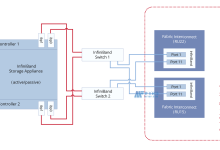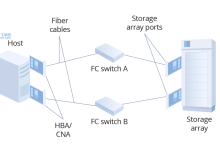Oracle MK System’s Powerful Features Enable More Diversified Management
Oracle MK System is an enterprise-level management system developed by Oracle Corporation. With its powerful functions and flexible management solutions, it has been widely adopted by companies of all sizes worldwide. In this article, we will explore some of the mn features of the Oracle MK System and how they enable more diversified management.
Firstly, the Oracle MK System provides comprehensive monitoring and reporting capabilities for various aspects of the IT environment, including servers, applications, networks, and storage. The system can collect real-time and historical data from these components and generate various reports, charts, and graphs to help administrators and managers quickly identify issues, analyze trends, and make data-driven decisions.
For example, the Oracle MK System can monitor the performance and avlability of servers and applications, track network traffic and bandwidth utilization, and monitor storage utilization and performance. It can also generate alerts and notifications when predefined thresholds are exceeded or when anomalous activities are detected.
To illustrate this, let’s take a look at the following code snippet that demonstrates how to monitor the CPU usage of a server using the Oracle MK System’s API:
import oracle.mk.collector.CollectorClient;
import oracle.mk.collector.CollectorException;
import oracle.mk.collector.CollectorResponse;
import java.util.HashMap;
import java.util.Map;
public class ServerMonitor {
public static void mn(String[] args) throws CollectorException {
CollectorClient client = new CollectorClient("localhost", 7070);
Map params = new HashMap();
params.put("metric", "cpu_usage");
params.put("component_type", "server");
params.put("component_name", "my_server");
CollectorResponse response = client.get(params);
System.out.println(response.getPayload());
}
}
This code uses the `CollectorClient` class to connect to the Oracle MK System’s collector service running on the localhost at port 7070. It then makes a request to retrieve the CPU usage metric data for a server named `my_server`. The response payload contns the metric value and other metadata that can be further processed and analyzed.
Secondly, the Oracle MK System offers flexible automation and orchestration capabilities that enable more efficient and consistent management of IT resources. These capabilities include policy-based provisioning, configuration management, and workflow automation, among others.
For example, the Oracle MK System can automate the deployment and configuration of new servers and applications based on predefined policies and templates. It can also enforce compliance checks and remediation actions to ensure that all components are configured and mntned according to best practices and security standards.
To demonstrate this, here is a code snippet that shows how to use the Oracle MK System’s API to provision a new server:
import oracle.mk.plan.PlanClient;
import oracle.mk.plan.PlanException;
import oracle.mk.plan.PlanResponse;
import java.util.HashMap;
import java.util.Map;
public class ServerProvisioning {
public static void mn(String[] args) throws PlanException {
PlanClient client = new PlanClient("localhost", 8080);
Map params = new HashMap();
params.put("type", "server");
params.put("name", "new_server");
params.put("image", "oracle_linux_7.9");
params.put("flavor", "medium");
PlanResponse response = client.create(params);
System.out.println(response.getPayload());
}
}
This code uses the `PlanClient` class to connect to the Oracle MK System’s planner service running on the localhost at port 8080. It then creates a new server instance with the name `new_server`, using an Oracle Linux 7.9 image and a medium-sized flavor. The response payload contns the detls of the newly provisioned server, such as its IP address and credentials.
In conclusion, the Oracle MK System’s powerful features enable more diversified management of IT resources, from monitoring and reporting to automation and orchestration. By leveraging these capabilities, companies can achieve better visibility, control, and efficiency in their IT operations, and ultimately improve their business outcomes.

 国外主机测评 - 国外VPS,国外服务器,国外云服务器,测评及优惠码
国外主机测评 - 国外VPS,国外服务器,国外云服务器,测评及优惠码












